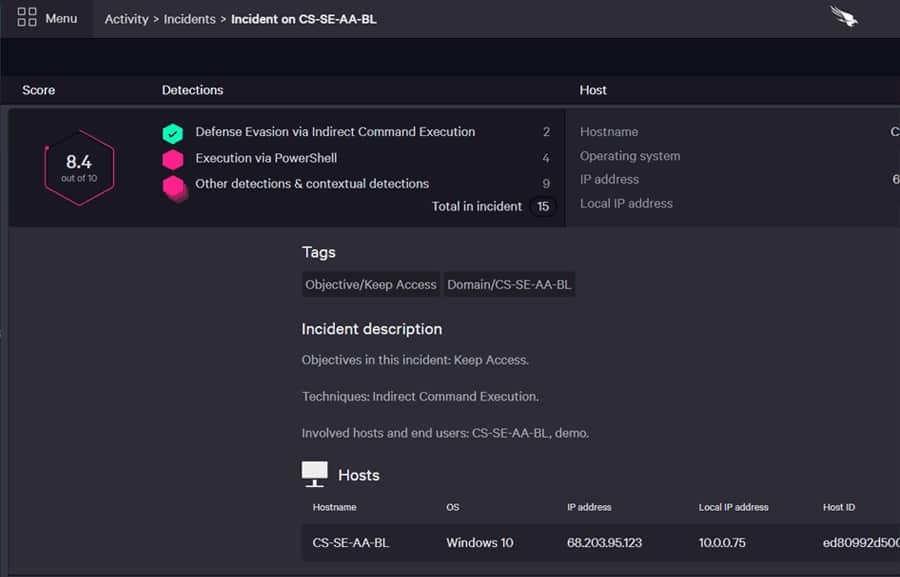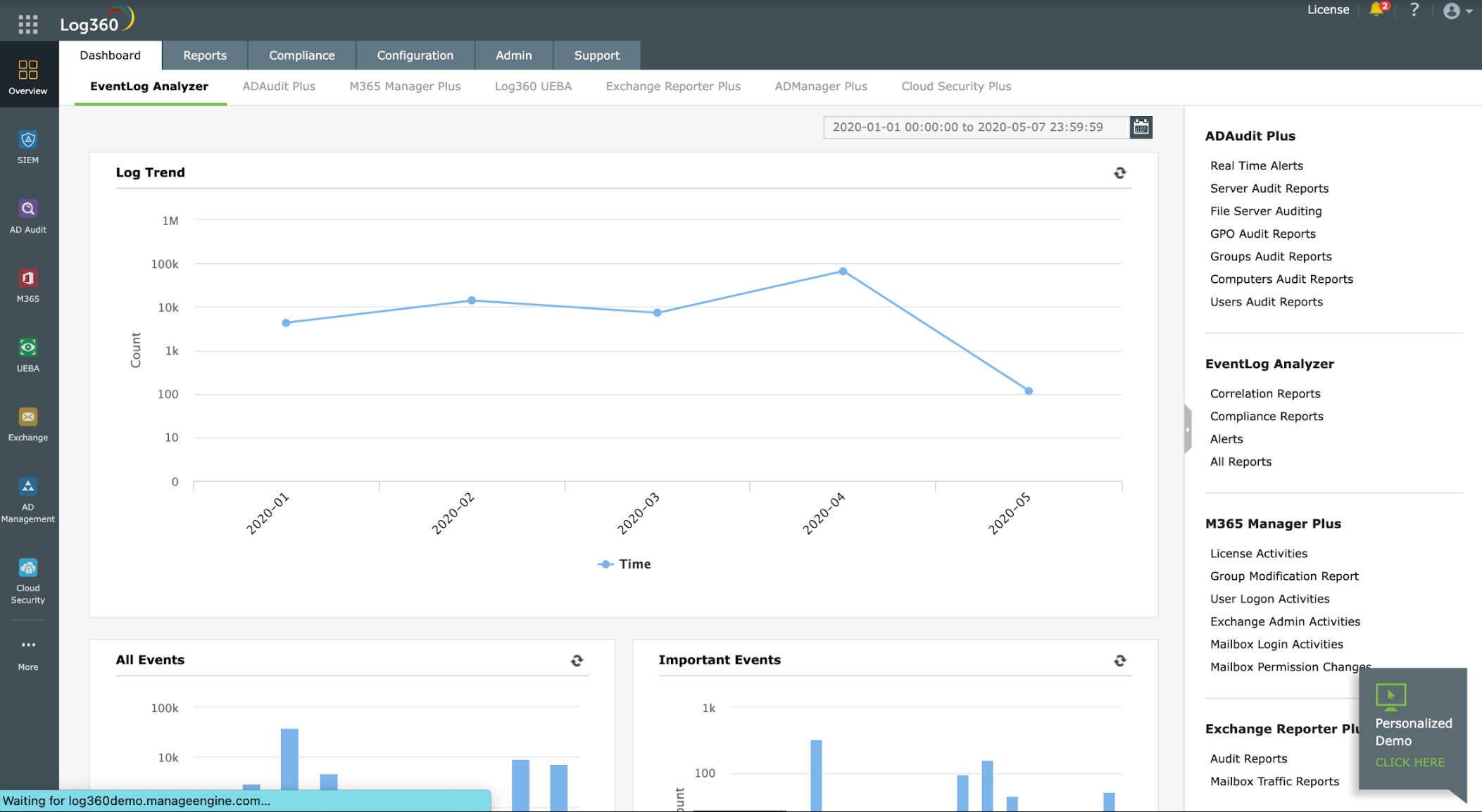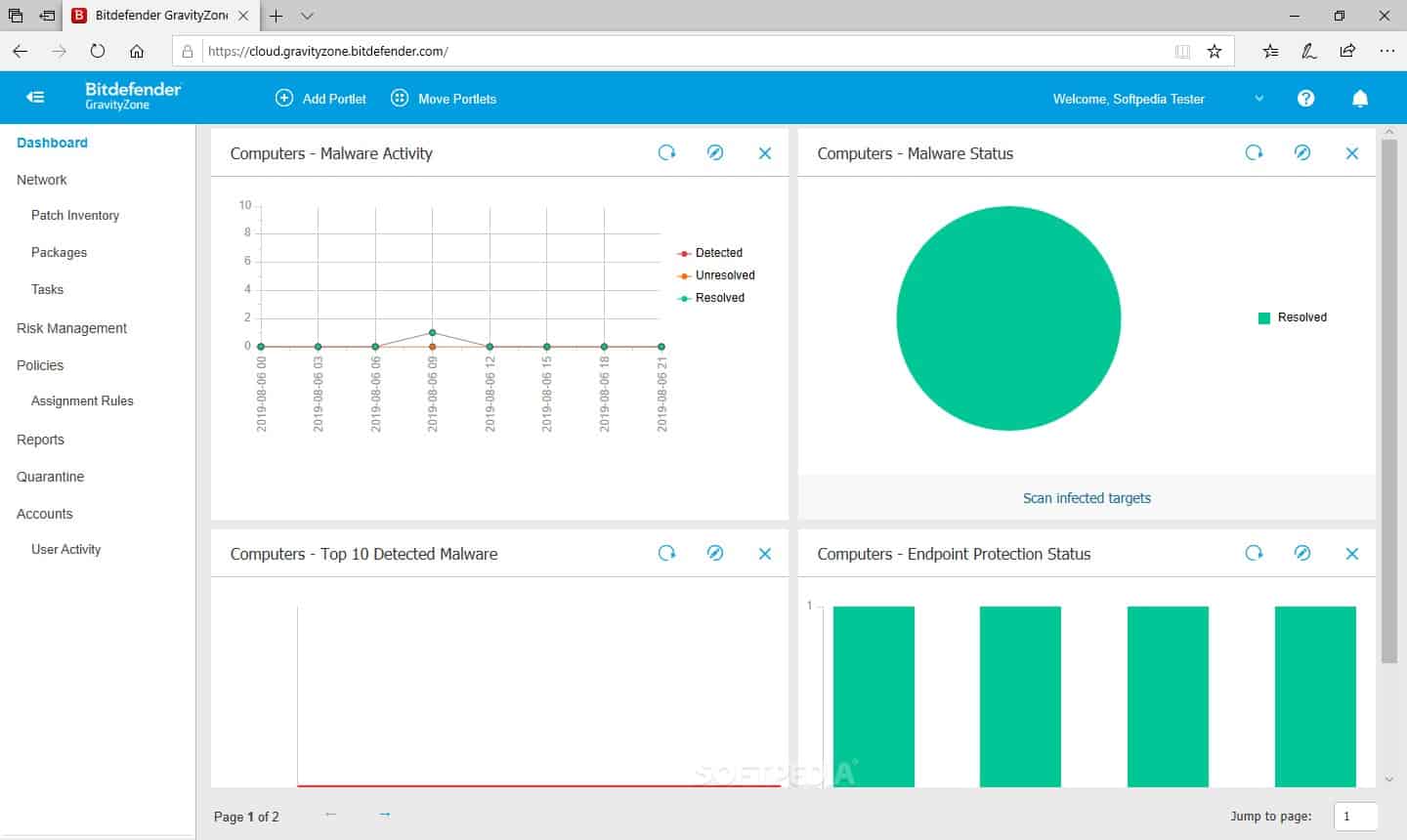There are many types of ransomware attacks, and they can all ruin your business. Ransomware can be implemented in many ways but the two most frequently practiced strategies are the encryption of files and data theft
Hackers that use encryption-based ransomware render all files on a computer unusable by encrypting them. Usually, the only way to recover those files is to pay for the decryption key. Disclosure ransomware attacks steal data from your system, and the hacker threatens to publish that information if a ransom isn’t paid. Suppose your company holds personally identifiable information (PII) on members of the public, and that data gets released. In that case, you can be fined and sued, and you will lose data security standards accreditation.
In some business sectors, compliance with data privacy standards is made a condition of contracts. For example, the payment card clearing sector requires conformance to PCI DSS. If you don’t have that accreditation, you can’t process payments by card – for most online businesses, that ban would put them out of business. So, there is a lot at stake.
Here is our list of the six best ransomware scanners:
- CrowdStrike Falcon Insight EDITOR’S CHOICE This package combines a cloud-based SIEM-like service with endpoint protection modules incorporating next-generation AV features.
- ManageEngine Log360 This is a SIEM system that can spot all types of malicious activity, whether manual or automated. It can protect against all ransomware and data theft threats. It runs on Windows and Windows Server.
- BitDefender GravityZone A package of security tools that includes antivirus checks at many points of the system, including just before uploading to backup storage.
- Rapid7 InsightIDR A next-generation SIEM that includes automation actions to block ransomware and other malicious activity. This is a SaaS platform.
- Exabeam A next-generation SIEM that uses AI methods to identify abnormal activity, such as ransomware actions. This cloud-based system will also block malware and intruders.
- LogRhythm NextGen SIEM Platform A suite of anti-malware tools that combine to identify, block and remove ransomware, other malware, and intruders. They are offered as a cloud service, as an appliance, or as software for Windows Server.
Protection against ransomware
You can’t afford to let hackers get at your essential data stores. Data thieves manually gain access to a system and explore it to find valuable data. Ransomware is an automated process and can be a bit hit and miss.
Some ransomware will only infect the computer to which it first gets access, while others can move around the network, infecting all of the endpoints before triggering the attack. You improve your chances of recovering from an encryption ransomware attack by backing up all files and then just restoring them, wiping out the encryption without paying the ransom. However, some ransomware systems can infect backup stores as well.
Disclosure ransomware is very difficult to recover from without paying the ransom. Therefore, preventing this type of attack is your only hope. So, defending stores of PII is very important. The most important way to protect against all types of ransomware is to install security software that will spot it as soon as it gets onto an endpoint and prevent it from triggering.
Ransomware scanners
Ransomware is an automated attack. It is malware, so your best form of defense against these attacks is through advanced malware detection systems. Spotting ransomware requires a combination of security services. It needs significantly evolved systems that spot anomalies rather than the old-fashioned type of anti-virus packages that just look for a list of filenames or processes. Ransomware is evolving all the time, and you don’t want to be caught out as the first victim of a new variant that AV companies haven’t spotted yet.
There are two types of systems that provide appropriate defense against ransomware: next-generation AVs and next-generation SIEMs. In addition, some security system providers have developed services that form a platform of protection services. These systems establish a baseline of regular activities performed by each user and device. This is called user and entity behavior analytics (UEBA). A typical net-gen system then flags any activity that doesn’t fit that pattern of normal behavior.
The next-gen strategy defends against previously unencountered malware. This is important in ransomware because that type of system only operates for a short period. After a brief attack campaign, the hacker owners revamp their ransomware so that it won’t be spotted by those security systems that have recorded its operating procedures and updated all instances with this information.
Hackers are constantly changing their ransomware into new versions or even entirely new systems. They can use several different entry methods, but the most common are:
- An RDP attack through an unprotected port
- An installer disguised as an email attachment
The use of the Remote Desktop Protocol is an intruder-like strategy, and a download from an email attachment is a typical method used by Remote Access Trojans (RATs). In addition, some ransomware combines these two operating methods, using a download for the initial infection and then RDP to replicate the malware around the network, continuing to seize all devices and backup stores.
A competent ransomware scanner will catch both of these two infection methods.
The Best Ransomware Scanners
The most appropriate ransomware protection system for you depends to a great extent on your operating configuration. For example, you need to be sure that the ransomware scanner can interact with the operating systems that you are running on your sites. In addition, if you use cloud storage, you need to ensure that your scanner can identify ransomware before it gets uploaded. Beyond these operating system considerations, there are several important factors to determine.
What should you look for in a ransomware scanner?
We reviewed the ransomware prevention system market and analyzed tools based on the following criteria:
- The ability to spot zero-day attacks
- The inclusion of behavior baselining and anomaly detection
- Alerts for detected attacks
- The ability to implement automated threat prevention actions
- System hardening features
- A free trial or a demo system for a cost-free assessment
- Good value for money
Depending on whether you hold a lot of PII on your system, you might need to consider buying in several tools to protect your company from ransomware attacks wholly. Using the above selection criteria, we drew up a shortlist of some excellent security packages that will keep you safe from ransomware.
1. CrowdStrike Falcon Insight EDITOR’S CHOICE
CrowdStrike Falcon Insight combines a cloud-based service with on-premises modules. The cloud system is a SIEM service, and the on-premises agents are implemented as a next-generation antivirus package. The agents are also available as a standalone package, called Falcon Prevent.
The device agents can operate independently, so there is still protection for endpoints when they are offline. This service constantly operates, sampling activity and looking for anomalies. A potential threat triggers actions to shut down malware, such as ransomware, by killing processes, removing files, suspending user accounts, and isolating the device from the network.
The agents gather log messages and upload them to the cloud service. This central system performs secondary scans on activity data and notifies other endpoints if one agent discovers a problem. This major SIEM operation receives a threat intelligence feed from CrowdStrike, which informs its threat hunting activities.
The strategy implemented by CrowdStrike Falcon Insight can spot new ransomware and malware before the cybersecurity industry becomes aware of it, so there is less chance of the business operating the software becoming an early victim of a new strain of ransomware. This system is also very good at identifying insider threats and intruders.
Pros:
- Catches zero-day ransomware and other new malware
- Combines elements on each device with an oversight module on the cloud
- Implements both next-generation AV and a SIEM
- Includes UEBA for activity baselining
- Receives a threat intelligence feed
- Endpoint software installs on any operating system
Cons:
- It doesn’t include routines for backing up files
You can get a 15-day free trial of Falcon Prevent.
EDITOR’S CHOICE
CrowdStrike Falcon Insight is our top pick for a ransomware scanner because it offers a double detection strategy with both on-device and cloud-based modules. First, the coordinating SIEM service introduces new information from outside the organization to supplement activity data supplied by the endpoint agents. The on-device software provides quick checks for ransomware when any new software gets installed and when it runs. This combination of focus offers the best way to catch ransomware, other malware, insider threats, and intruders.
Get a 15-day free trial: go.crowdstrike.com/try-falcon-prevent.html
Operating system: Cloud plus Windows, Linux, Unix, macOS
2. ManageEngine Log360
ManageEngine Log360 is a SIEM-based threat intelligence platform that can spot automated attacks, such as ransomware and manual intrusion by data thieves.
As well as using log messages as data input, Log360 receives a threat intelligence feed from outside the business. This provides new tactics to look out for when scouring through activity reports. In addition, the service displays events live on the system dashboard as each log message gets added to the pool, and Second, it stores logs for later research.
Log360 includes processes for scrutinizing Active Directory to recommend tighter access controls. This is useful for reducing the vulnerability of a business if one account gets compromised. In addition, anomaly detection can identify potential zero-day ransomware attacks, and the threat intelligence feed gives Log360 indicators of compromise that identify specific chains of actions as likely ransomware activity. It can also remember malware activity and the actions of intruders and malicious insiders.
Pros:
- A fast scanner for ransomware thanks to a threat intelligence feed
- Anomaly detection to spot zero-day attacks
- Covers cloud platforms as well as onsite endpoints
- Can trigger actions to shut down attacks
- Spots manual malicious actions as well as ransomware and malware
Cons:
- It doesn’t include backup management
Log360 runs onsite and installs on Windows Server. However, it is also able to supervise AWS, Azure, and Exchange Online. You can get a 30-day free trial of the tool.
3. BitDefender GravityZone
BitDefender GravityZone is a bundle of security systems to protect all devices on a network from ransomware and hacker attacks. This package is powerful on malware sweeps that occur at several points in the system and spot malware ingress. In addition, all endpoints get AV systems that scan each new file dropped onto the device.
An important feature of this package that many other anti-ransomware systems lack is its backup manager. You can pair this backup service with your cloud storage account or open a cloud file space account with BitDefender. This backup system also scans each file for malware before uploading it to storage. This gives you the best defense against encryption ransomware.
GravityZone includes a vulnerability manager that tightens security and will harden your system against RDP-based ransomware. It also has a file integrity monitor that blocks data theft and encryption.
Pros:
- Ransomware scans at all critical locations on a system, including endpoints
- A backup manager with full malware scans
- File integrity monitoring
- Vulnerability manager
Cons:
- A large number of services can be difficult to track
GravityZone installs as a virtual appliance, and it is available for a one-month free trial.
4. Rapid7 InsightIDR
Rapid7 InsightIDR is an extended detection and response (XDR) service. The package is cloud-based but focused on defending endpoints, which are the landing zones for all ransomware. The service installs agents on all endpoints to scan directly for all types of malware, including ransomware. This service is also good for spotting intruder activity.
The modules in InsightIDR include a threat intelligence feed and UEBA for anomaly detection. Both the feed and activity reports form inputs to a SIEM system that quickly scans for threats. A great feature of InsightIDR is that it sets up honeypots on the network to attract hackers and malware, making them easier to detect.
Pros:
- Endpoint agents spot new files that could be part of a ransomware
- A threat intelligence feed
- Honeypots to draw ransomware and hackers into the open
- UEBA for activity baselining
Cons:
- No backup management
- Vulnerability scanning costs extra
Rapid7 offers InsightIDR for a 30-day free trial.
5. Exabeam
Exabeam is a cloud platform that offers the next-generation SIEM. This system coordinates with device agents to spot new files and record activity, and this is an excellent way to spot ransomware.
The features of the Exabeam system include a threat intelligence feed that informs the log scanning process. Logs are gathered and uploaded by device agents, which also perform their analysis of activities onsite. In addition, the anomaly detection system of Exabeam establishes a baseline of normal activities with UEBA and then looks for deviations from that standard.
The Exabeam service offers an extra module to interact with other systems on your network to shut down attacks. This is called security orchestration, automation, and response (SOAR). It interfaces with firewalls and access rights management services to automatically block ransomware and other malware. It is also able to shut down insider threats and data theft attempts.
Pros:
- Fast identification of ransomware files and other malware
- AI-based UEBA baselining for anomaly detection
- A highly rated threat intelligence feed from SkyFormation
- Automated responses to shut down ransomware and hacker activity
Cons:
- No data discovery processes
- No backup management
6. LogRhythm NextGen SIEM Platform
LogRhythm NextGen SIEM Platform is a collection of security modules that are organized into a stack. This combines local intelligence gathering with a significant threat hunter and is an excellent service for catching ransomware.
The LogRhythm package is organized into services. These include UEBA for activity baselining and a threat intelligence feed for indicators of compromise. Additionally, log message uploads are supplemented by live network activity monitoring and device agent reports on endpoint events. These provide inputs to the threat hunting SIEM.
When threats are identified, the LogRhythm system deploys SOAR to coordinate blocks with other security software on your system. This service quickly detects and shuts down hacker activity and insider threats as well as malware attacks.
LogRhythm is available as on-premises software for Windows Server, an appliance, and a hosted SaaS system.
Pros:
- Gathers event data on endpoints to spot ransomware arrival
- Co-ordination with endpoint agents and other onsite security products to feed activity reports into a SIEM
- Automated responses to shut down malware and hacker activity
- A range of deployment options that include onsite installation, a hosted service, and a network appliance
Cons:
- No data discovery service for sensitive data classification
- No backup manager
L’article 6 Best Ransomware Scanners for 2021 est apparu en premier sur Comparitech.







0 Commentaires